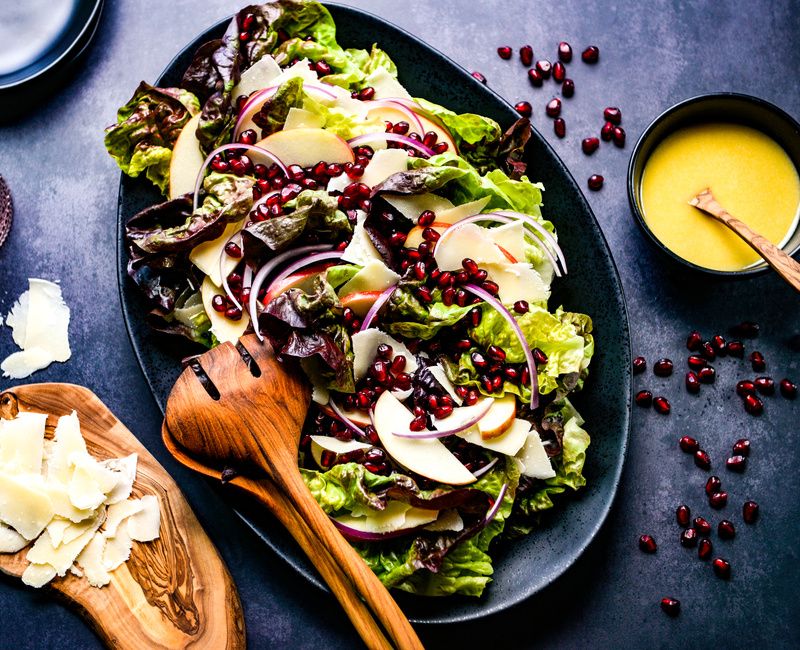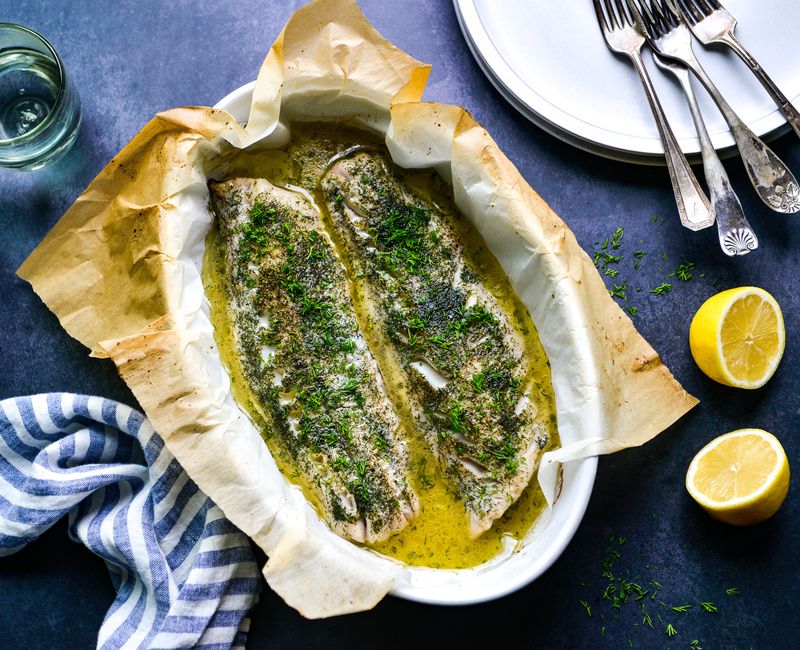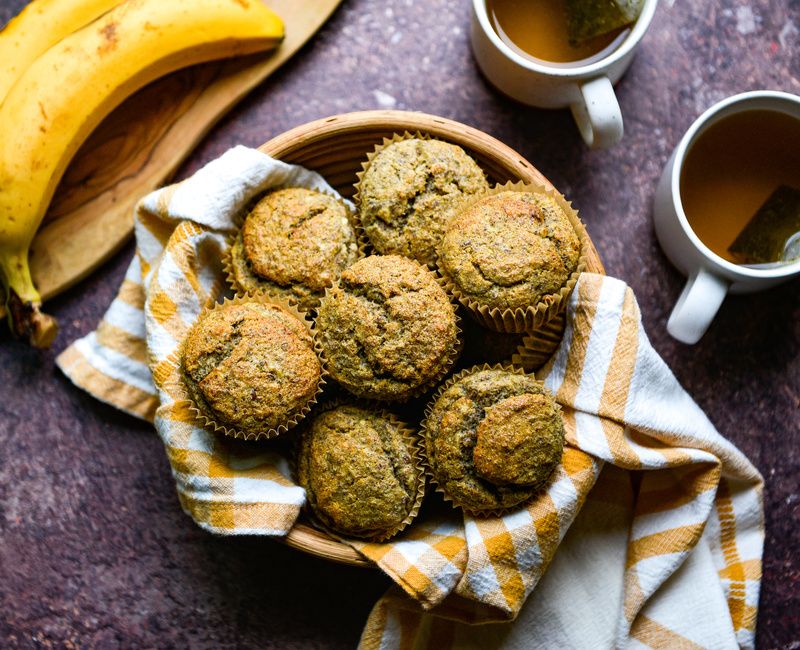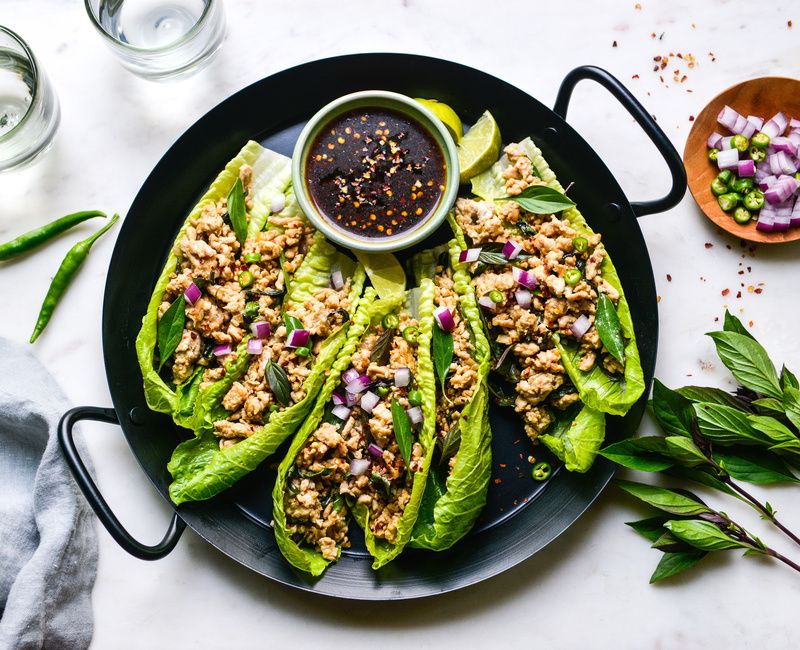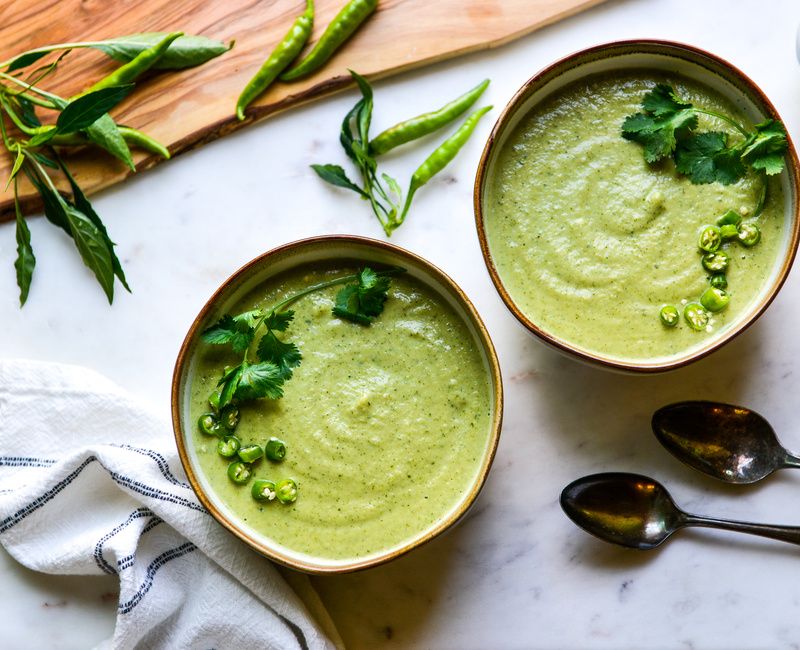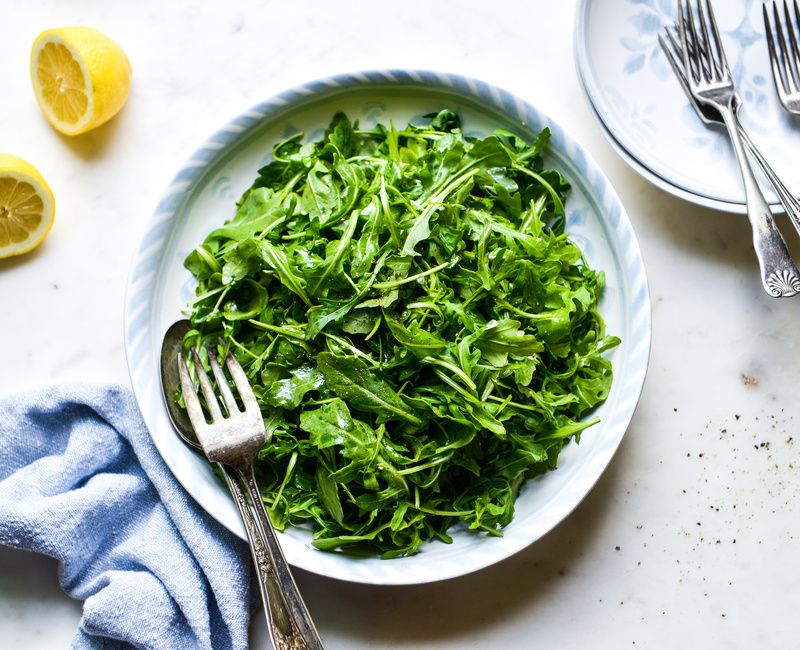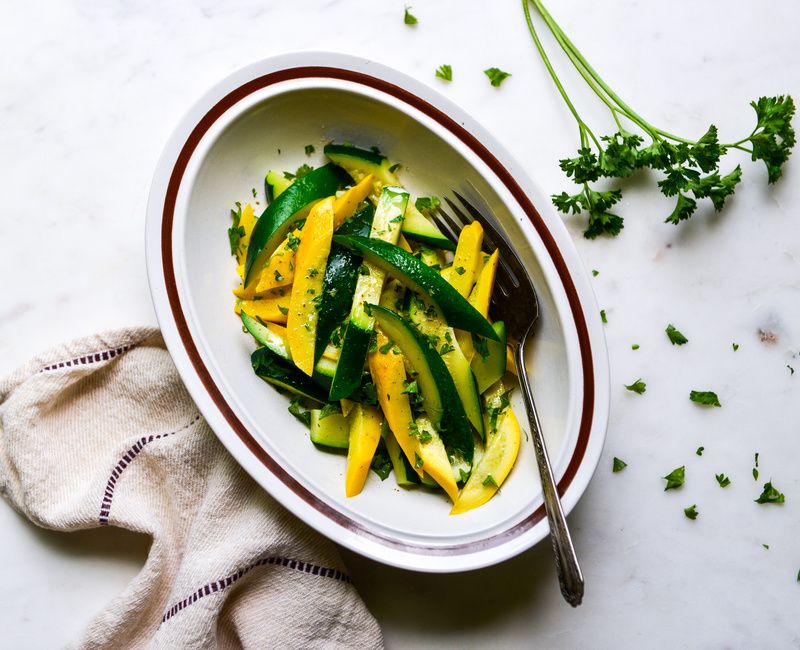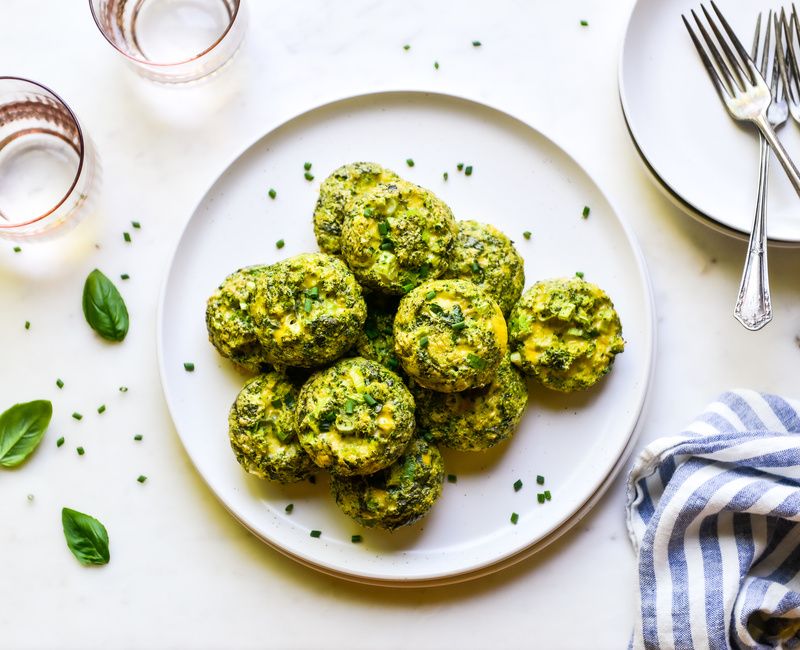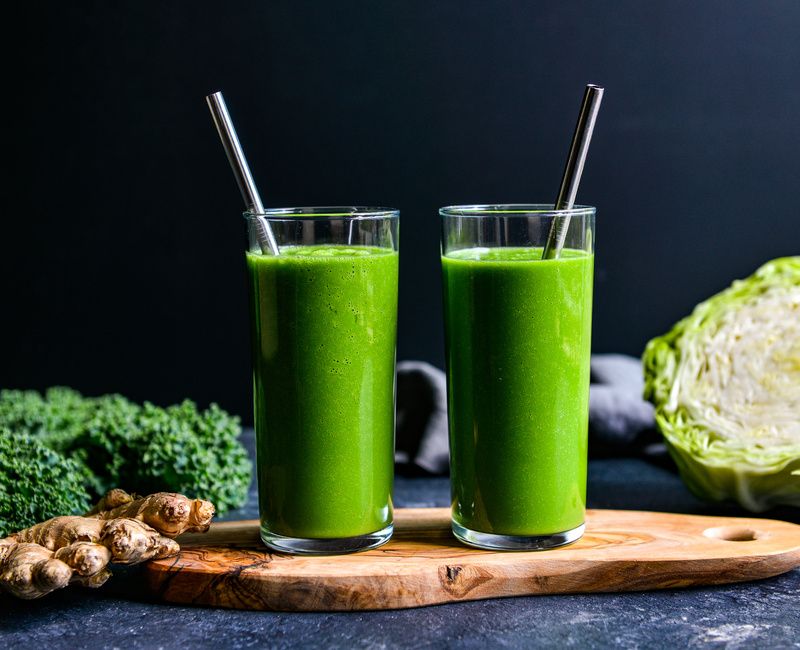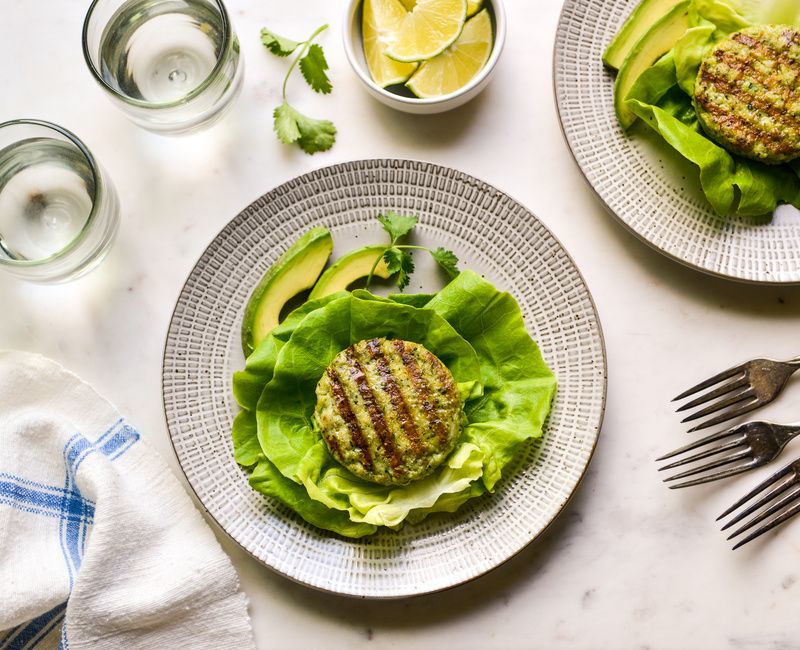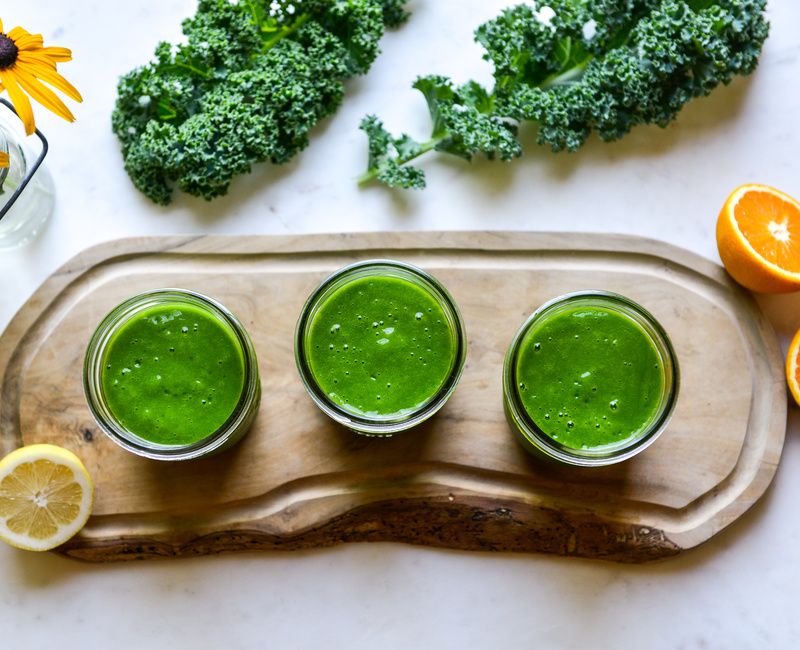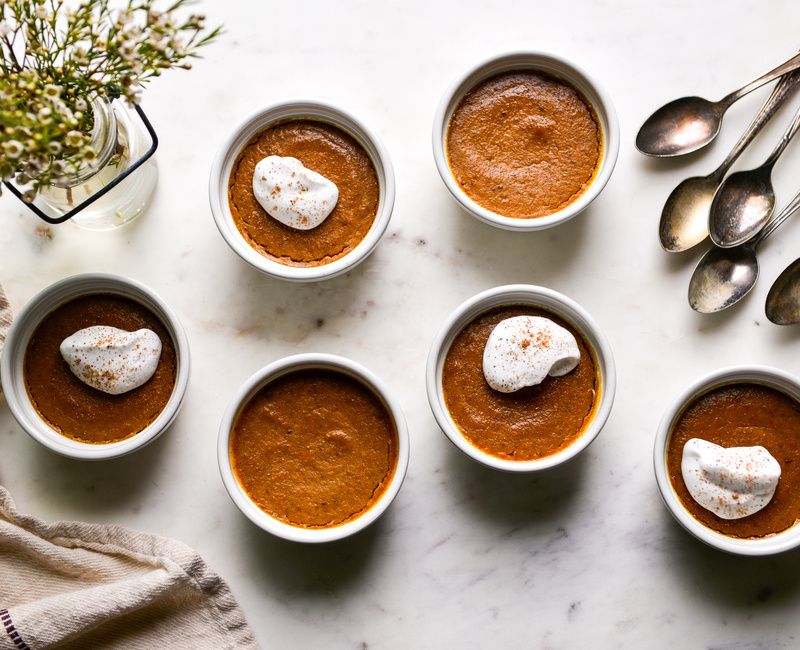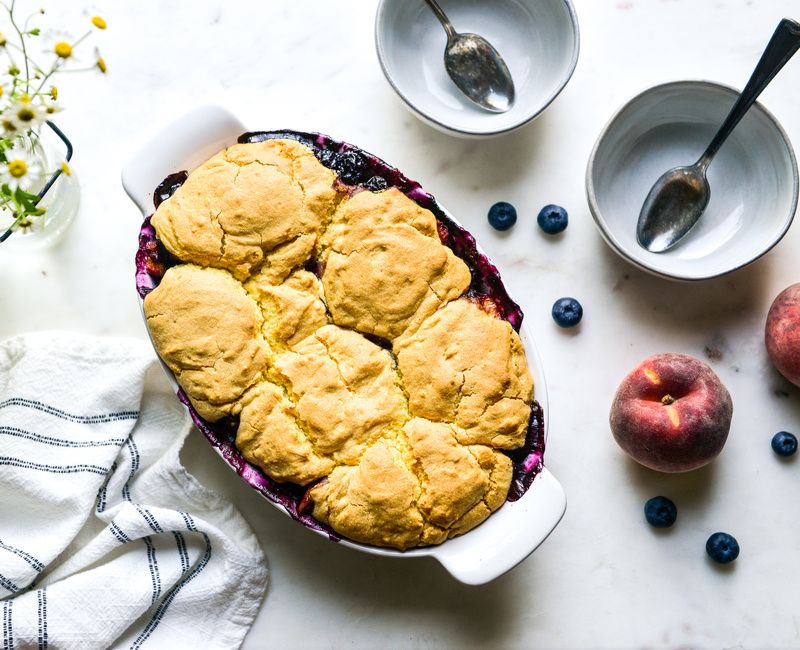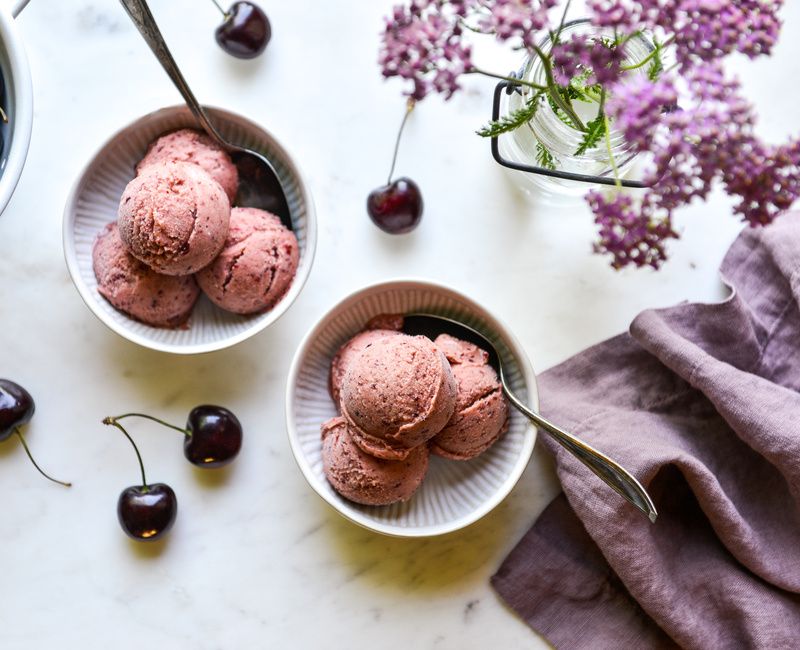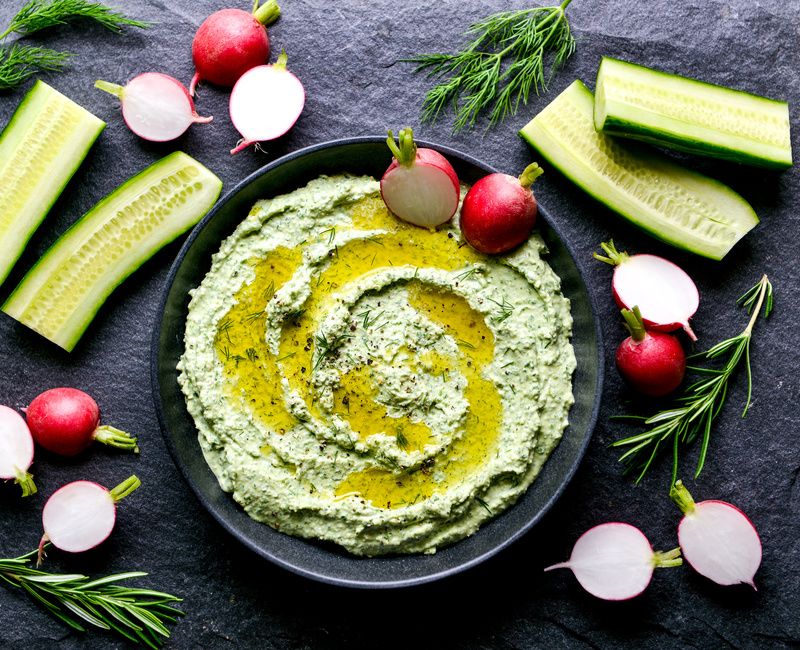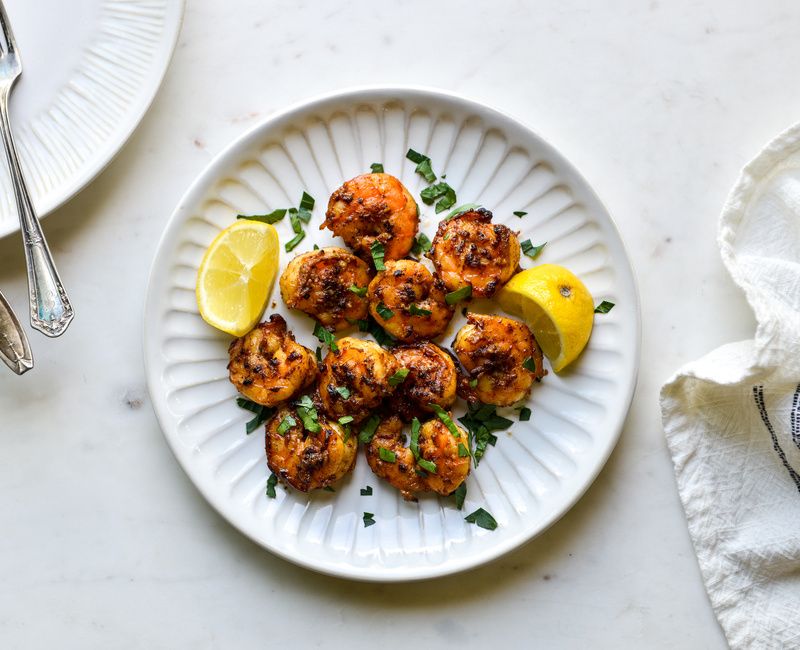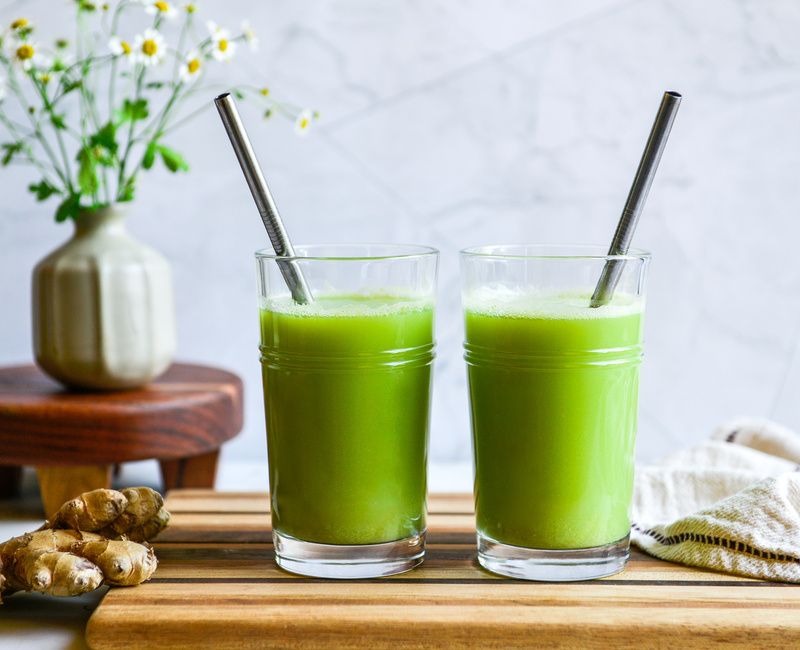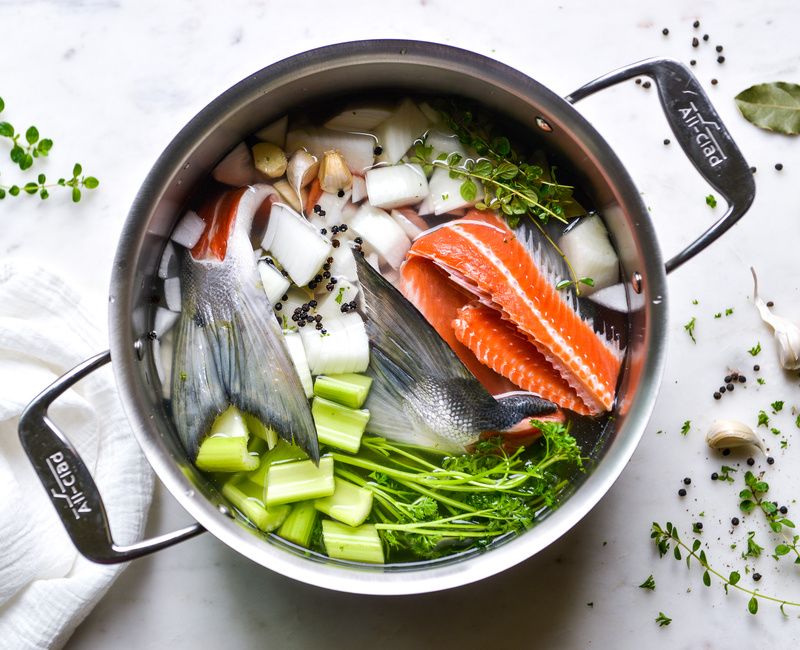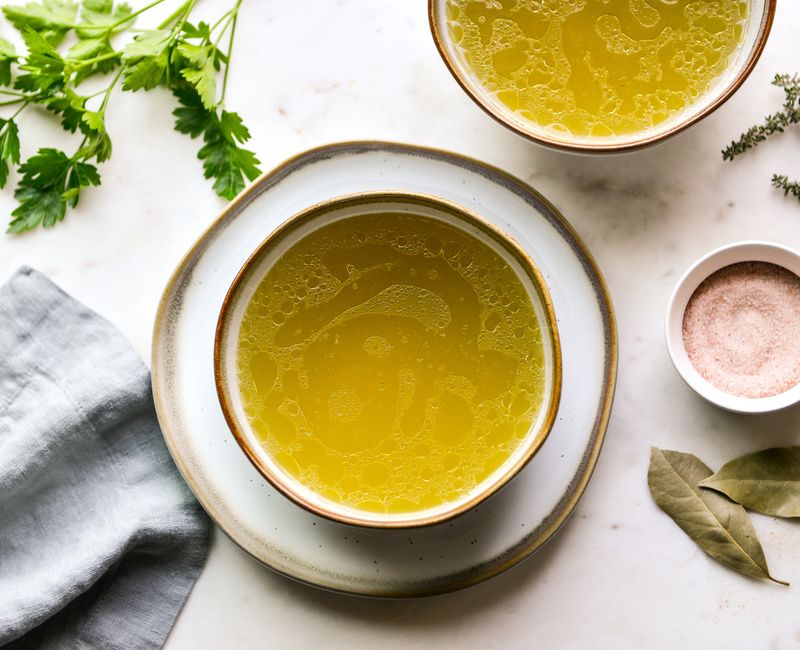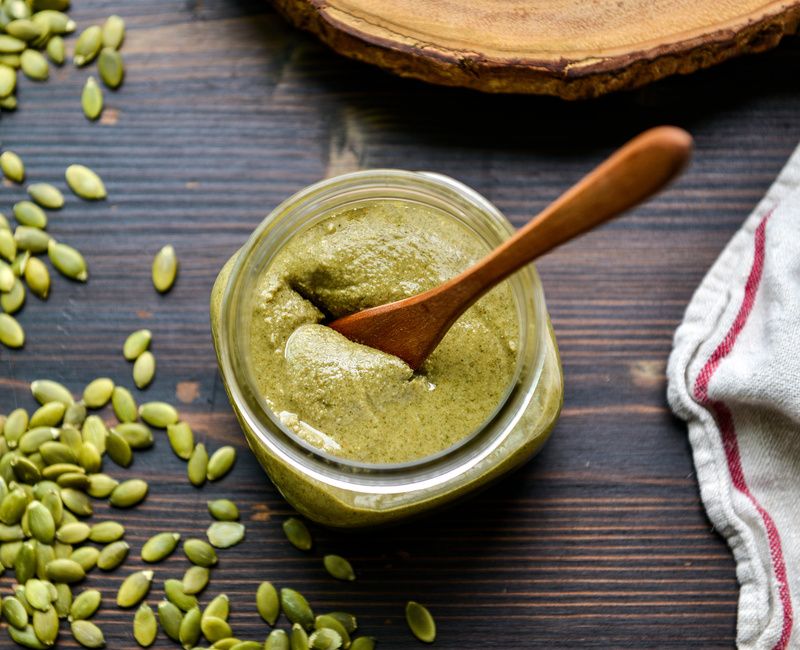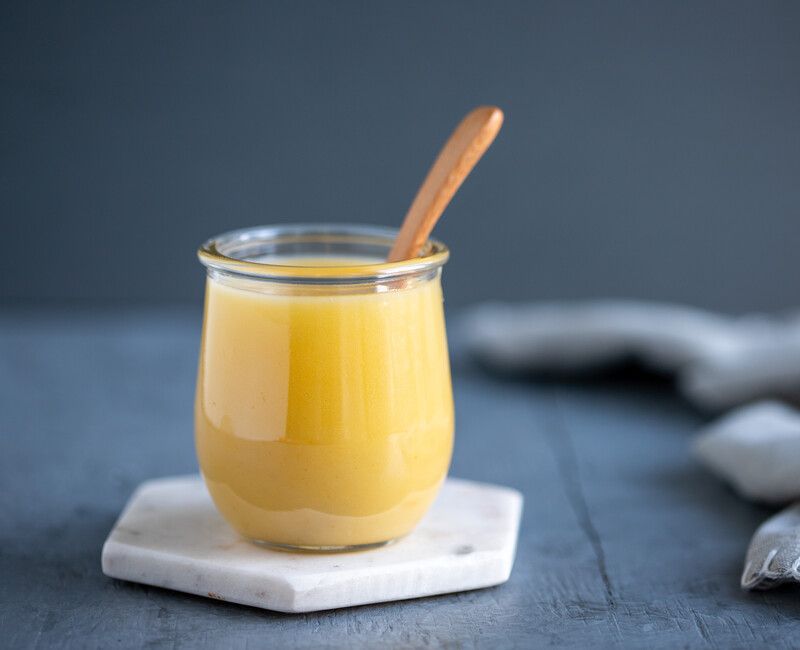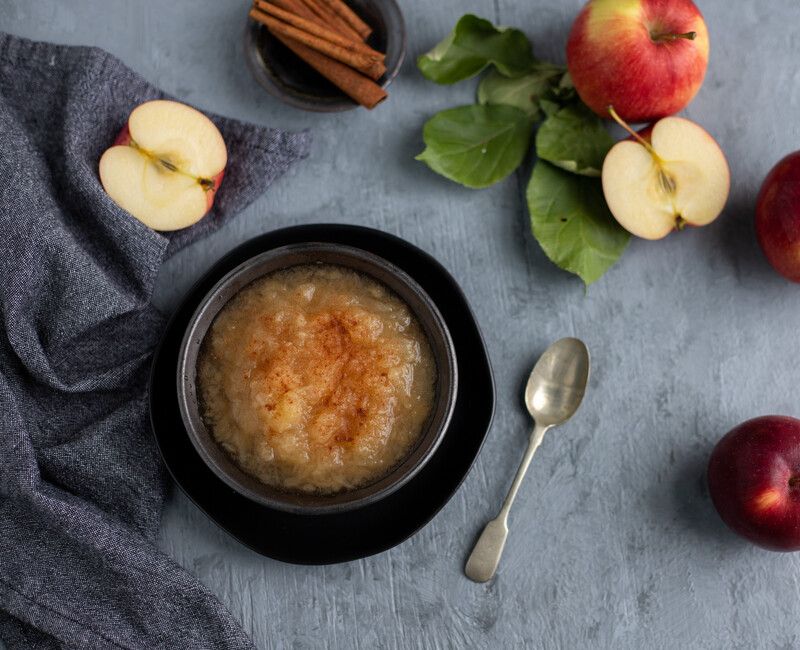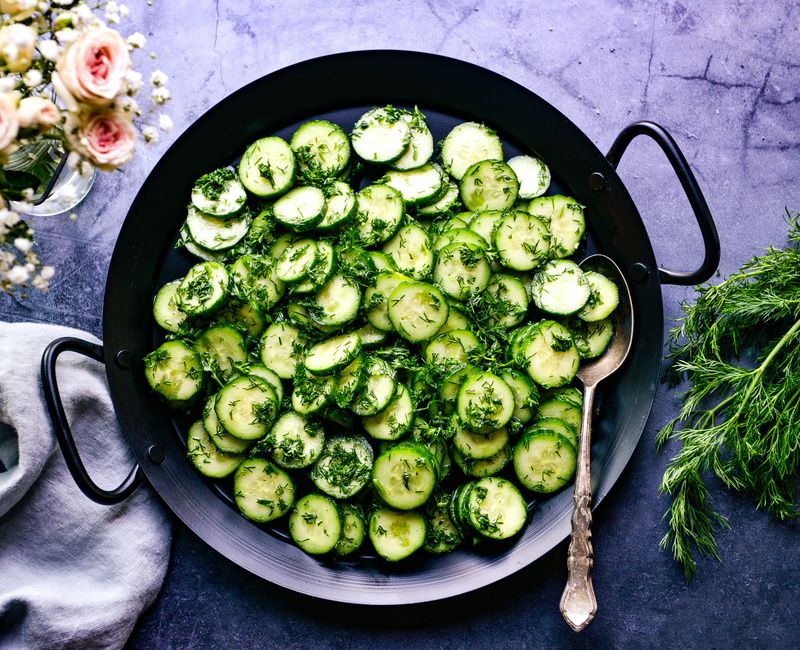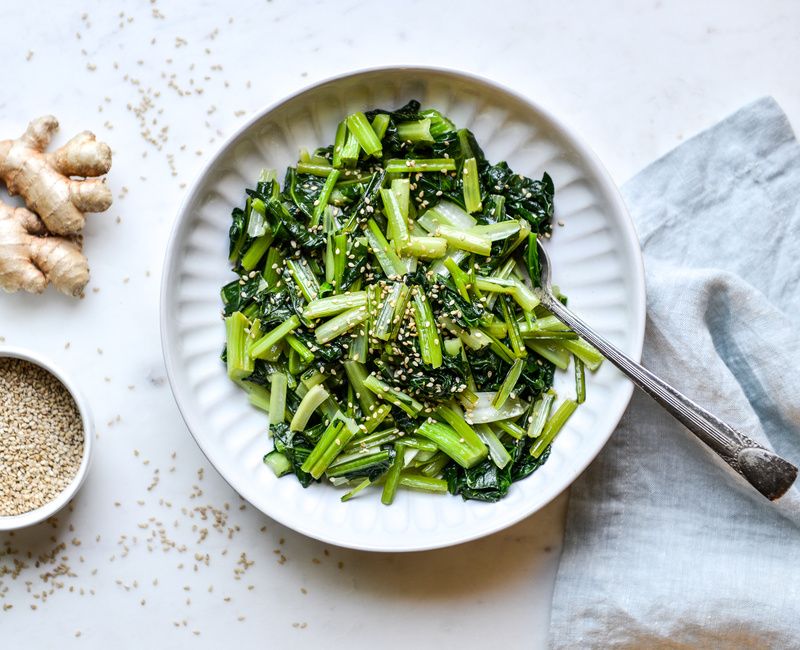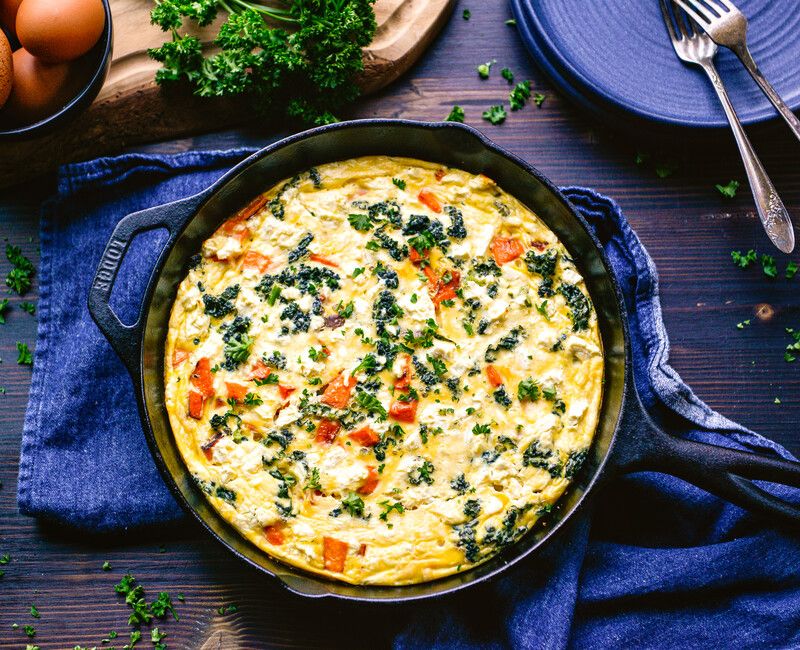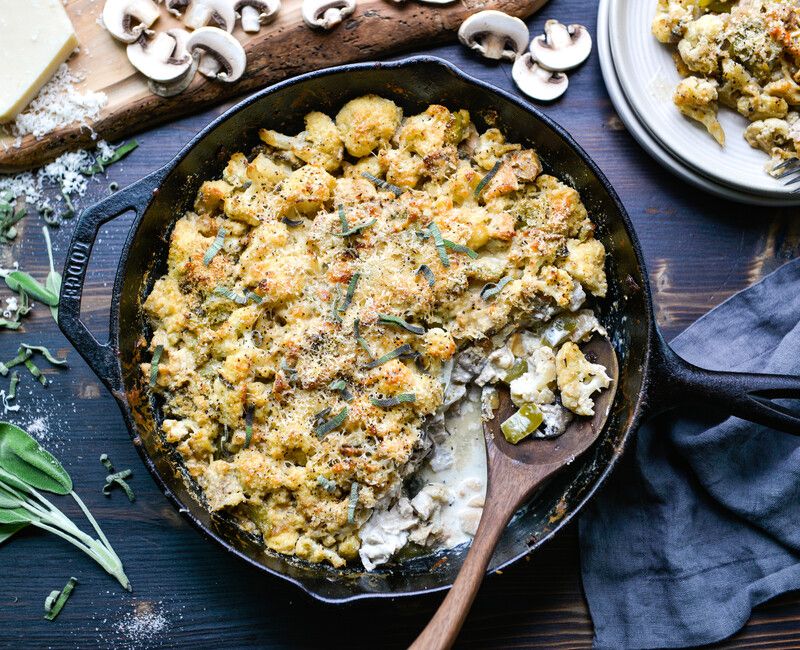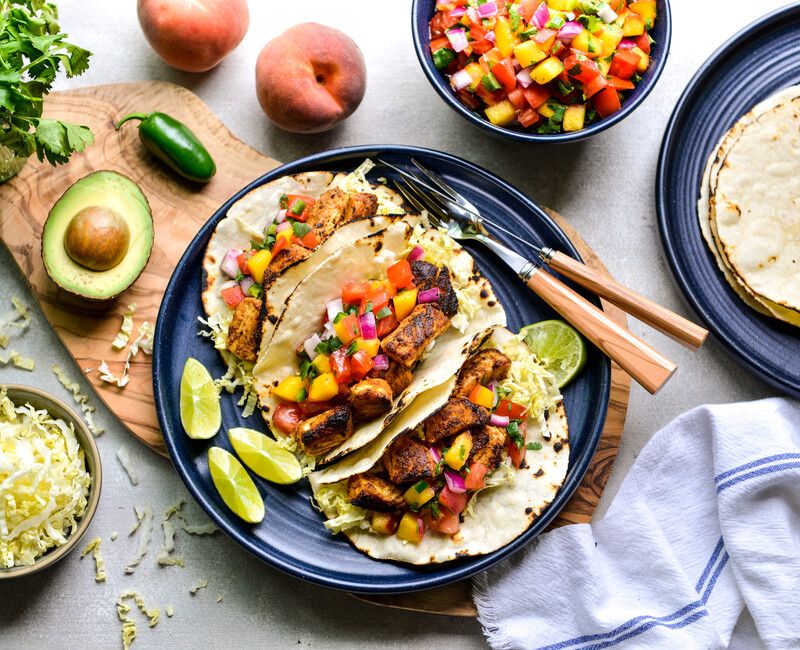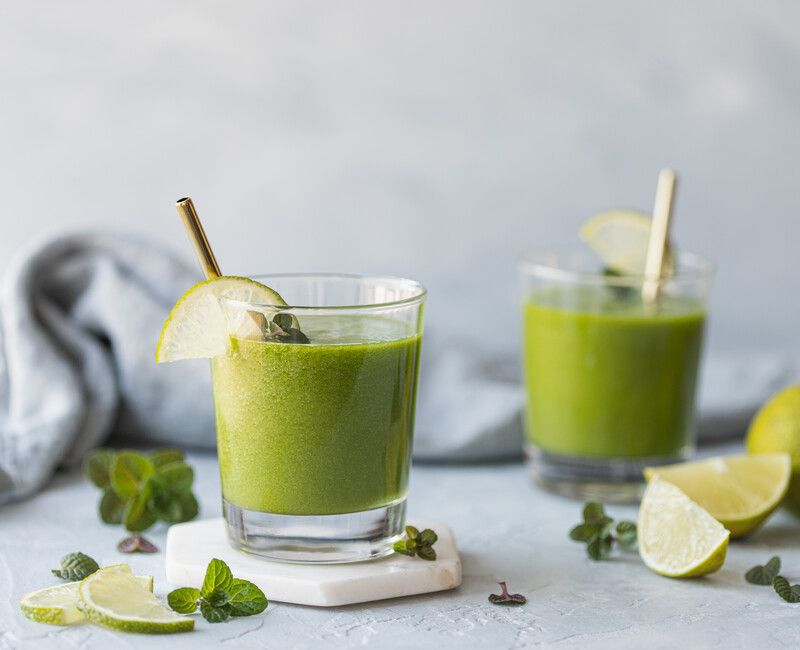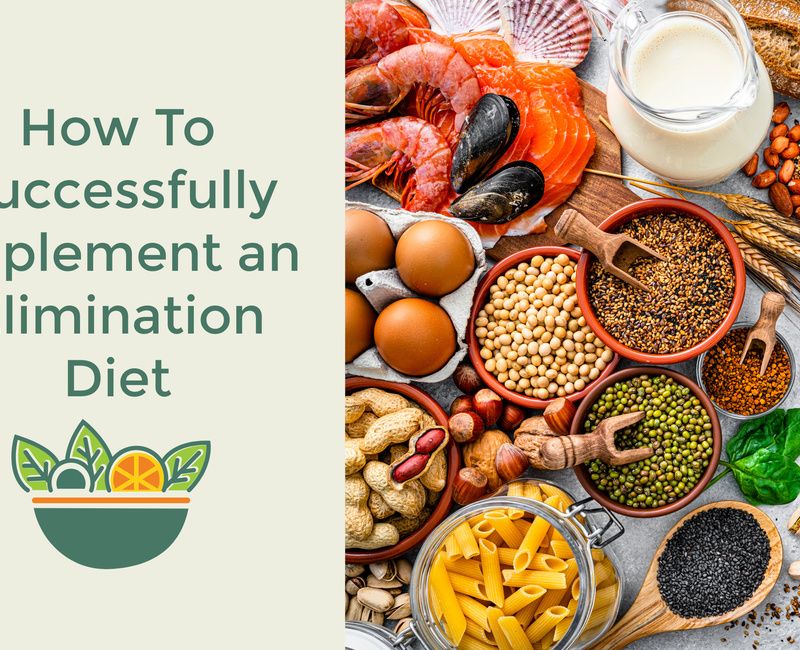Low-Oxalate Diet
Oxalates are naturally occurring compounds found in all plant foods. Specific species of bacteria, such as Oxalobacter formigenes, in our guts break down this compound to reduce the amount that is absorbed into our bloodstream from our food. Unfortunately, due to overuse of antibiotics and chemicals like glyphosate in non-organic foods, this species of bacteria can disappear from our gut microbiomes. Additionally, certain individuals are more susceptible to the effects of oxalates in their food. Oxalate exists in two forms, soluble and insoluble. Consuming calcium-rich foods (from dairy products or supplements) along with higher oxalate foods will cause a percentage of these oxalates to form calcium-oxalate crystals, which then get excreted through the bowels and never get absorbed. Usually foods contain a mix of soluble and insoluble oxalates. Soluble oxalates, once absorbed, can bind with minerals in the body and form kidney stones (calcium-oxalate stones).
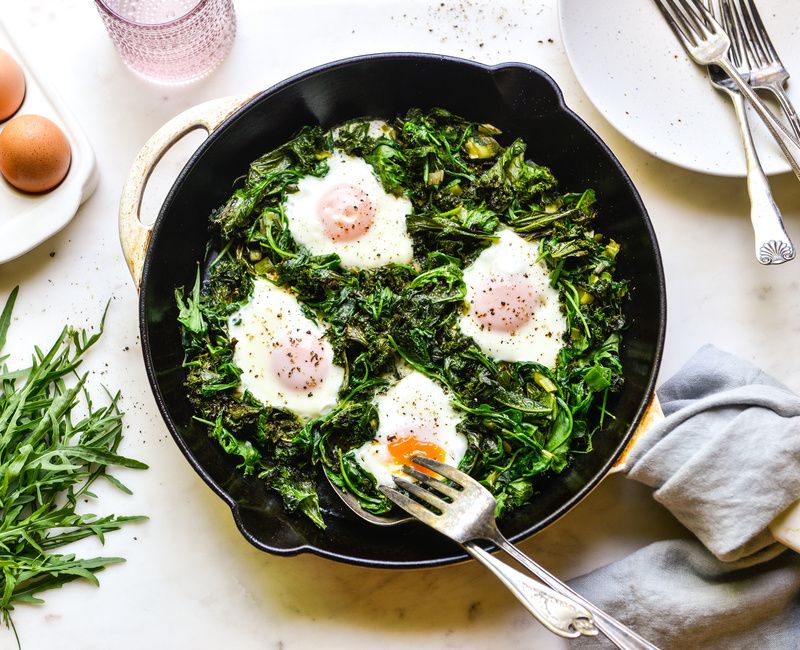
Latest Corn-Free Recipes
Low-Oxalate Diet Safe with Modifications
What is the Low-Oxalate Diet?
A low-oxalate diet is generally defined as containing less than 50mg of dietary oxalates per day, though a diet of less than 100mg per day may be adequate for some individuals. Keep in mind that oxalate content can vary in the same food depending upon the soil in which the food was grown, the climate, the part of the plant being analyzed, and the ripeness of the fruit or vegetable. Oxalates are also formed in your body from endogenous synthesis, the metabolism of vitamin C, and the metabolism of glycine (an amino acid). About half of the urinary excretion of oxalates is from what is consumed in food and the other half is from a byproduct of cellular metabolic processes.
- Low-Oxalate Foods: Containing 0-2mg of oxalates per serving.
- Moderate Oxalate Foods: Containing 3-9mg of oxalates per serving.
- High Oxalate Foods: Containing 10-49mg of oxalates per serving.
- Very-High Oxalate Foods: Containing over 50mg of oxalates per serving.
Remember that portion sizes matter! 1 to 2 raspberries per day may not be an issue, but an entire cup may put you close to your daily allotment for oxalates. If you choose to consume a higher oxalate meal, make sure your other meals or snacks contain little to no oxalates, or choose calcium-rich foods or supplements to consume along with your higher oxalate foods.
Who is the Low-Oxalate Diet For?
If you are experiencing any of the following conditions or symptoms, a low-oxalate diet may help:
-
Kidney stones (due to calcium oxalate stone formation)
-
Interstitial cystitis
-
Frequent urination
-
Crohn's disease (due to increased oxalate absorption from fat malabsorption)
-
Lichen sclerosus
-
Chronic joint or body pain
-
Chronic fatigue
How Does the Low-Oxalate Diet Work?
By removing foods high in oxalates and emphasizing foods low or moderate in oxalate content, this diet helps reduce the body’s oxalate burden. Because calcium can bind oxalates in the digestive tract, consuming calcium-rich foods or supplements with higher-oxalate meals can help reduce oxalate absorption. Blood sugar balance is also important—high sugar intake or poor glycemic control can lead to calcium loss in the urine, increasing the risk of stone formation.
Foods to Eat on a Low-Oxalate Diet:
Most of your meals should revolve around low-oxalate foods. Use our categorized lists (low, medium, and high oxalate) to create balanced meals. All recipes tagged "low-oxalate" on our site use ingredients from the low and medium oxalate lists.
-
Fruits: Apples, bananas, melons, grapes, strawberries, peaches, plums
-
Vegetables: Broccoli, cauliflower, cabbage, cucumbers, squash, mushrooms, lettuce, arugula
-
Proteins: Beef, pork, chicken, turkey, fish, seafood, eggs
-
Dairy: Yogurt, cheese, milk, butter
-
Grains: White rice, wild rice, masa harina, barley
-
Legumes & Seeds: Chickpeas, lima beans, green peas, black-eyed peas, sunflower and pumpkin seeds
-
Herbs & Spices: Basil, oregano, chives, cilantro, small amounts of ginger and cinnamon
-
Fats & Oils: Olive oil, coconut oil, butter
-
Sweeteners: Maple syrup, honey, cane sugar
-
Beverages: Water, chamomile tea, apple juice
Foods to Avoid on a Low-Oxalate Diet:
Avoid very-high and high-oxalate foods such as:
-
Spinach, beets, rhubarb
-
Nuts and nut butters (especially almonds, cashews, peanuts)
-
Sweet potatoes, potatoes with skin, okra
-
Soy products (tofu, soy milk, soy flour)
-
Certain grains and flours (amaranth, teff, buckwheat, quinoa)
-
Cocoa powder and chocolate products
-
Raspberries, figs, oranges, dates
Full oxalate content charts can be found below to help you plan meals.
Benefits of a Low-Oxalate Diet:
Many individuals experience significant relief from symptoms related to oxalate overload. Benefits can include:
-
Reduced frequency of kidney stone formation
-
Relief from urinary urgency and bladder pain
-
Decrease in joint and muscle pain
-
Improvement in chronic fatigue symptoms
-
Support for gut health in individuals with Crohn’s or fat malabsorption
Challenges and Drawbacks:
This diet can be restrictive, especially if you also follow another therapeutic diet. Oxalate values vary between lists, so referencing reliable data is essential. Additionally, avoiding high-oxalate foods may reduce intake of otherwise nutrient-dense foods. We recommend focusing on a variety of low-oxalate whole foods and small amounts of medium-oxalate foods to maintain nutritional adequacy.
How Do I Start the Low-Oxalate Diet?
-
Become a Nourishing Meals® Member to access all of our low-oxalate recipes and ready-made meal plans.
-
Add the Low-Oxalate Diet to your diet profile.
-
Use the Low and Medium Oxalate Lists to guide your recipe and ingredient choices.
-
Limit Vitamin C Supplements to 500mg/day or less to prevent increased endogenous oxalate production.
-
Avoid excess sugar to prevent urinary calcium loss and reduce stone risk.
-
Plan and schedule meals using our calendar and grocery list tools.
-
Join our Community! Get inspired with new recipes and updates through our Nourishing Meals Facebook group.
Your Invitation
Healing begins when we align our choices with our body’s needs. By honoring your body with foods that support oxalate balance, you are choosing a path of clarity, strength, and deep restoration. Every small shift matters—and each meal is a chance to renew your vitality from the inside out.
✨ Try Nourishing Meals® free for 7 days and discover how simple—and deeply healing—it can be to follow a therapeutic diet that supports your whole-body vitality.
Oxalates in Foods List:
Use this list to help guide your food choices during a low-oxalate diet. You'll want to choose the majority of the foods you consume from the Low and Medium food lists.
Very High-Oxalate Foods (50+ mg):
- 1 cup beet juice (175mg)
- ½ cup beets (76mg)
- ½ cup okra (57mg)
- 1 medium baked potato with skin (97mg)
- 4 ounces homemade potato french fries (51mg)
- ½ cup rhubarb (541mg)
- ½ cup cooked spinach (755mg)
- 1 cup raw spinach (656mg)
- 1 oz almonds (122mg)
- ½ cup navy beans (76mg)
- 1 cup soybeans (96mg)
- 1 cup amaranth flour (294mg)
- 1 cup brown rice flour (65mg)
- 1 cup rice bran (281mg)
- 1 cup buckwheat flour (336mg)
- 1 cup cornmeal (64mg)
- 1 cup potato flour (177mg)
- 1 cup quinoa flour (174mg)
- 1 cup soy flour (94mg)
- 1 cup brown teff flour (302mg)
- 1 cup ivory teff flour (262mg)
- 1 cup cooked amaranth (292mg)
- 1 cup cooked buckwheat groats (133mg)
- 1 cup cooked bulgur wheat (86mg)
- 1 cup corn grits (97mg)
- 1 cup cooked millet (92mg)
- 1 cup cooked quinoa (110mg)
- 1 cup cooked teff grain (126mg)
- 1 cup cooked wheat berries (98mg)
-
4 tsp cocoa powder (67mg)
- 1 cup homemade hot chocolate (65mg)
High-Oxalate Foods (10-49 mg):
- 1 cup tomato juice (10mg)
- 1 cup carrot juice (12mg)
- 1 date (24mg)
- ½ grapefruit (24mg)
- 1 orange (29mg)
- 1 cup raspberries (48mg)
- 1 tangerine (10mg)
- 1 medium persimmon (19mg)
- 5 dried figs (24mg)
- ½ cup dried pineapple (30mg)
- ¼ cup prunes (11mg)
- ½ cup canned pineapple (24mg)
- 1 medium ripe avocado (10mg)
- 1 cup bamboo shoots (35mg)
- 1 large raw carrot (30mg)
- 1 cup cooked celery (10mg)
- 1 cup raw celery (38mg)
- 10 olives (18mg)
- ½ cup parsnip (15mg)
- 1 cup mashed potatoes (29mg)
- 1 cup sweet potatoes (28mg)
- 2 ounces potato chips (42mg)
- ½ cup mashed rutabaga (31mg)
- ½ cup tomato sauce (30mg)
- ½ cup mashed turnip (30mg)
- ½ cup cubed yams (40mg)
- 1 cup pumpkin seed flour (11mg)
- 1 oz cashews (49mg)
- 1 oz peanuts (27mg)
- 1 oz pecans (10mg)
- 1 oz pistachios (14mg)
- ½ cup walnuts (15mg)
- 1 tablespoon peanut butter (13mg)
- 1 tablespoon tahini (14mg)
- ½ cup fava beans (20mg)
- ½ cup red kidney beans (15mg)
- ½ cup refried beans (16mg)
- 3.5 ounces tofu (13mg)
- 1 cup garbanzo bean flour (17mg)
- ½ cup GarFava flour (15mg)
- 1 cup soy milk (20mg)
Medium-Oxalate Foods (3-9 mg):
- 1 cup red grape juice (6mg)
- 1 cup 100% cranberry juice (5mg)
- 1 banana (3mg)
- 1 cup blackberries (4mg)
- 1 cup blueberries (4mg)
- 1 cup cherries (3mg)
- 1 fresh fig (9mg)
- ½ lemon (3mg)
- ½ lime (3mg)
- 1 cup pineapple (4mg)
- 1 cup strawberries (4mg)
- 1 ounce raisins (3mg)
- ½ cup canned cherries (7mg)
- 1 small artichoke (5mg)
- 4 spears asparagus (6mg)
- ½ cup chopped broccoli (6mg)
- ½ cup cooked sliced carrots (7mg)
- ½ cup green beans (9mg)
- ½ cup green bell pepper (5mg)
- ½ cup hot chili peppers (5mg)
- ½ cup frozen mixed vegetables (5mg)
- 1 cup chopped mustard greens (4mg)
- 1 cup collards (9mg)
- 1 medium tomato (7mg)
- 1 cup sea vegetables (3mg)
- ½ cup yellow squash (4mg)
- ½ cup sunflower seeds (6mg)
- ½ cup pumpkin seeds (8mg)
- 1 tablespoon hummus (4mg)
- ½ cup mung beans (8mg)
- 1 cup corn flour (3mg)
- ½ cup potato starch (3mg)
- ½ cup coconut flour (4mg)
- 1 cup cooked white rice (4mg)
- ½ cup canned white hominy (6mg)
- ½ cup cooked Ancient Harvest quinoa elbow noodles (9mg)
- ½ cup cooked Tinkyada elbow brown rice noodles (5mg)
- 1 cup cooked popcorn (5mg)
- 1 English muffin (8mg)
- 1 plain bagel (9mg)
- 1 slice white bread (5mg)
- 1 slice whole oat bread (5mg)
- 1 slice whole wheat bread (6mg)
- 1 slice rye bread (7mg)
- 1 slice Udi’s Gluten-Free White bread (7mg)
- 1 corn tortilla (7mg)
- 1 flour tortilla (3mg)
- 1 piece corn bread (4mg)
- 1 rice cake (4mg)
- 1 cup tuna salad (6mg)
- 1 cup chocolate milk (7mg)
- 1 envelope powdered milk (3mg)
-
1 tablespoon soy sauce (3mg)
-
1 tablespoon chili powder (7mg)
-
1 tablespoon nutritional yeast (7mg)
- 1 cup prune juice (7mg)
Low-Oxalate Foods (0-2 mg):
- 1 cup orange juice (1mg)
- 1 cup grapefruit juice (1mg)
- 1 apple (1mg)
- 1 cup applesauce (2mg)
- 1 apricot (1mg)
- ¼ cantaloupe melon (1mg)
- 1 cup honeydew melon (1mg)
- 1 mango (1mg)
- 1 nectarine (0mg)
- 1 papaya (1mg)
- 1 peach (0mg)
- 1 plantain (1mg)
- 1 plum (0mg)
- 16 seedless grapes (1mg)
- 1 slice watermelon (1mg)
- 1 cup dried apples (2mg)
- 1 cup dried apricots (3mg)
- ½ cup dried cranberries (1mg)
- ½ cup cranberry sauce (2mg)
- ½ cup canned peaches (1mg)
- ½ cup canned pears (1mg)
- ½ cup alfalfa sprouts (0mg)
- 1 cup chopped raw kale (2mg)
- ½ cup Brussels sprouts (2mg)
- 1 cup raw bok choy (1mg)
- ½ cup green or red cabbage (1mg)
- ½ cup cooked cauliflower (1mg)
- ½ cup corn kernels (1mg)
- ¼ cucumber (1mg)
- ½ cup endive (0mg)
- 1 cup iceberg lettuce (0mg)
- 1 cup romaine lettuce (0mg)
- 1 mushroom (0mg)
- 1 small onion (0mg)
- ½ cup frozen peas (1mg)
- 1 pickle (0mg)
- 10 radishes (0mg)
- ½ cup scallions (1mg)
- ½ cup sauerkraut (1mg)
- 4 waterchesnuts (0mg)
- ½ cup zucchini (1mg)
- 1 tablespoon flaxseeds (0mg)
- 1/3 cup oat bran (0mg)
- 1 cup corn bran (0mg)
- 1 cup barley malt flour (0mg)
- 1 cup cooked cellophane noodles (1mg)
- 1 medium egg (0mg)
- 3 oz antelope (0mg)
- 2 slices bacon (0mg)
- 3 oz buffalo (0mg)
- 3 oz chicken (0mg)
- 1 chicken hot dog (1mg)
- 3 oz chicken liver (0mg)
- 1 hot dog (1mg)
- 3 oz ham (0mg)
- 3 oz ground beef (0mg)
- 3 oz (90% lean) ground beef (1mg)
- 3.5 oz beef liver (0mg)
- 3 oz moose (0mg)
- 5 oz pork (0mg)
- 5 oz turkey (0mg)
- 3 oz venison (0mg)
- 3 oz Alaskan king crab (0mg)
- 1 fillet bluefish (1mg)
- 3 oz clams (0mg)
- 3 oz cod (0mg)
- 1 tsp cod liver oil (0mg)
- 3 oz flounder (0mg)
- 3 oz haddock (0mg)
- 3 oz halibut (0mg)
- 3 oz herring (1mg)
- 3 oz mackerel (0mg)
- 3 oz oysters (0mg)
- 3 oz pollock (0mg)
- 4 oz salmon (0mg)
- 1 can sardines (0mg)
- 3 oz shrimp
- 1 piece swordfish (0mg)
- 3.5 oz canned tuna (0mg)
- 3 oz whiting (0mg)
- 1 tablespoon butter (0mg)
- 1 oz cream cheese (0mg)
- 1 oz fat-free cream cheese (1mg)
- 1 oz low-fat cream cheese (1 mg)
- 1 cup fat-free milk (1mg)
- 1 cup 1% milk (1mg)
- 1 cup 2% milk (1mg)
- 1 cup whole milk (1mg)
- 1 cup buttermilk (1mg)
- 1 tablespoon sour cream (0mg)
- ½ cup vanilla ice cream (0mg)
- ½ cup frozen yogurt (1mg)
- 1 cup plain yogurt (2mg)
- 8 oz non-fat yogurt with fruit (1mg)
- 1 slice cheddar cheese (0mg)
- 1 slice low-fat cheese (0mg)
- 1 oz mozzarella cheese (0mg)
- ½ cup cottage cheese (0mg)
- 1 tablespoon apple butter (0mg)
- 1 tablespoon honey (0mg)
- 1 tablespoon molasses (0mg)
- 1 tablespoon ketchup (1mg)
- 1 tablespoon horseradish (0mg)
- 1 tablespoon fruit jam (1mg)
- 1 tablespoon mayonnaise (0mg)
- 1 teaspoon yellow mustard (1mg)
- 1 tablespoon salsa (1mg)
- 2 tablespoon whipped cream (0mg)
- 1 dash black pepper (0mg)
- 1 teaspoon garlic powder (0mg)
- 1 cup packed brown sugar (1mg)
- 1 tablespoon gelatin (0mg)
- 1 teaspoon lard (0mg)
- 1 teaspoon shortening (0mg)
- 1 teaspoon sugar (0mg)
- 1 tablespoon dried whey (0mg)
- 1 cup brewed coffee (1mg)
| Plan | Length | Actions |
|---|---|---|
Low-Oxalate Easter Brunch |
1 day | Please login to view and schedule plans |
Low-Oxalate & Low-Histamine Dinners Week 1 |
7 days | Please login to view and schedule plans |
Low-Oxalate & Low-Histamine Dinners Week 2 |
7 days | Please login to view and schedule plans |
3-Day Low-Oxalate Meal Plan |
3 days | Please login to view and schedule plans |
